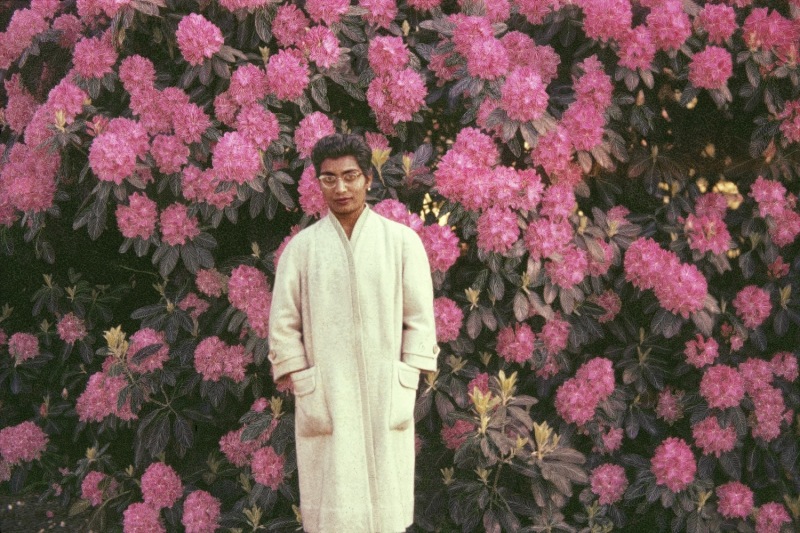
I’ve long turned to works of art as a way to process current events and wrestle with problems — both political and personal.
One of the most significant functions of a museum, after all, is to make space for works of art to console, inspire and prod us to think in new ways about the here and now.
Like many of you, I’ve been struggling to take in both the monumental crisis in Afghanistan and the displacements from Hurricane Ida, with urgent concerns about exile, migration and displacement.
And so I have repeatedly found myself in front of Allan DeSouza’s 2004 photograph “Blossom,” from his series “The Lost Pictures.”
The subject is deceptively straightforward: A woman with glasses and a long white coat stands before a dazzling array of rhododendrons. It has the look of a snapshot, but at a surprisingly large, poster-sized scale.
Its blurriness suggests a photograph blown up from a smaller image. But when I look closely, I see tiny white scratches scoring the surface.
As it turns out, the source image is a snapshot of deSouza’s mother taken by his father in the early 1960s. The artist made this work shortly after his mother died.
He scanned the original, then delicately erased tiny white lines throughout the image using photo-editing software.
The imposing scale monumentalizes a moment from the past, while the blur emphasizes our distance from the family photo, like the artist’s distance from the original snapshot.
By etching lines, deSouza is creating his own work by erasing data from the digital file — subtracting and adding at the same time. These lines also remind me of dense leaves or fish scales — protecting what lies underneath.
When I think about what deSouza’s work means to me, “Blossom” expresses complex and contradictory acts of memory, in which some events become magnified while other details lose clarity over time.
New memories layer over older ones while retaining traces of places we’ve been, people we’ve known and fraught histories of the world that surrounds us.
While deeply personal, “Blossom” also addresses a much bigger history of colonial diaspora. DeSouza’s parents were from Goa, now in India, but a Portuguese colony until 1961.
Before the artist was born, his parents emigrated to Nairobi, Kenya. During the upheaval following Kenyan independence, his family emigrated once again to London, the capital of the British colonial empire, when the artist was 7.
His family’s “double colonial history,” in the artist’s words, provides a vantage point to reflect on loss, disruption and remaking lives in new locations. This photograph reflects what he calls the “fallout” of empire, which continues today with ongoing migration and dislocation, inflected by race and nationality, and dependent on attachments and memories, as unstable as they are.
When looking at it, you might ask, what lines of memory may be erased by today’s migrations? How will the lives of refugees — from conflict or climate — be different from this point forward?
-Jon L. Seydl